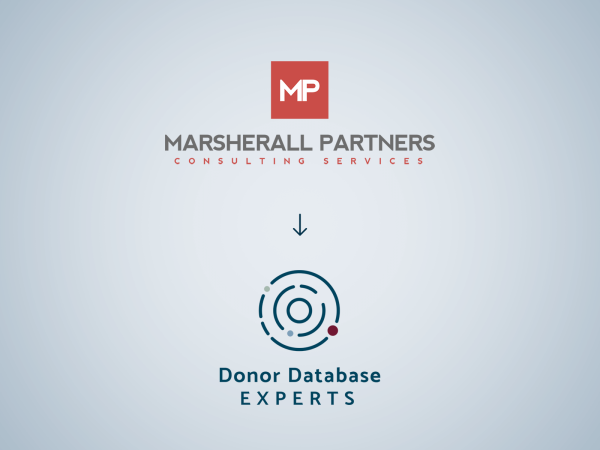Harnessing the Power of Nonprofit Data Analytics to Maximize Impact
Data analytics can amplify impact, enhance donor retention, and improve organizational outcomes.
Nonprofits operate at the intersection of limited resources and ambitious goals. The challenge? Maximizing every dollar donated and every hour volunteered to create measurable change in communities.
Whether you’re determining the cost of raising a dollar or identifying inefficiencies hampering your mission, data-driven solutions provide the foundation for smarter decisions.
What is Nonprofit Data Analytics?
Nonprofit data analytics is the process of collecting, organizing, and analyzing an organization’s data to extract actionable insights.
These insights help nonprofits make informed decisions about their programs, fundraising campaigns, donor engagement, and overall operations. Simply put, it’s about moving from gut instincts to evidence-backed strategies.
At Donor Database Experts, we specialize in helping nonprofits analyze and leverage their data to better serve their communities. Our approach allows organizations to uncover inefficiencies, improve ROI, and amplify the community impact of their philanthropic mission.

But what does this look like in action?
Think of it as using your data to answer critical questions like:
- Which initiatives are yielding the highest impact relative to their costs?
- Who are your most engaged donors or volunteers, and how can you retain them?
- Where does your fundraising funnel experience the highest drop-offs?
- Is your database properly encoded to track solicitor relationships, outstanding proposals/solicitations, naming opportunities, and more?
By answering these questions, nonprofits can make smarter choices, allocate resources efficiently, and demonstrate greater transparency to stakeholders.

Types of Nonprofit Data Analytics
Nonprofit data analytics isn’t one-size-fits-all. It serves a variety of purposes and can be divided into the following key categories:
Descriptive Analytics
Descriptive analytics focuses on understanding what has happened in the past. This includes compiling historical data from revenue, donor behavior, or program performance to create comprehensive reports. For example:
- How many new donors did your nonprofit acquire last year?
- What were the most frequent donation channels?
With descriptive analytics, nonprofits build a clear picture of their current circumstances.
Diagnostic Analytics
Once you understand what happened, diagnostic analytics dives deeper into why it happened. This type of analysis evaluates contributing factors to uncover root causes. For instance:
- Why did volunteer participation decline in a particular event?
- What factors lead to higher donation levels during one campaign or appeal over another?
Predictive Analytics
Using historical data, predictive analytics forecasts what is likely to happen., By analyzing these trends, organizations can predict donor churn, project future fundraising revenue, or streamline their fundraising strategies. Key insights might look like:
- Forecasting donor trends to identify who is most likely to give again.
- Forecast future pledge payment and cash flow.
Prescriptive Analytics
Prescriptive analytics identifies what actions nonprofits should take to capitalize on opportunities or mitigate issues. For example:
- What steps would optimize mid-sized donor cultivation strategies?
- What is the optimum timeline for maximizing the success of a fundraising event?
This type of advanced analytics enables organizations to test different scenarios and determine the best path forward based on data-backed recommendations.
Benefits of Nonprofit Data Analytics
When harnessed effectively, nonprofit data analytics can unlock multiple benefits:
Data-Informed Decision Making
Gone are the days of relying solely on instincts or anecdotal evidence. Data analytics ensures decisions are backed by facts, improving the likelihood of favorable outcomes.
Improved Donor Engagement
Understanding donor behavior allows you to segment audiences, tailor communications, and create campaigns that resonate. This level of personalization can lead to higher retention rates and increased donations.
Optimized Fundraising Revenue Streams
By analyzing fundraising data, your organization can identify what’s working—and what isn’t. Allocate resources to the events, appeals, and campaigns that drive the greatest impact and adjust underperforming ones.
Greater Transparency & Accountability
Data-driven insights help you demonstrate your organization’s effectiveness. Whether it’s reporting to a board of directors or showing donors how their contributions are used, analytics builds trust and credibility.
Improved Fundraising ROI
Analytics can pinpoint the strategies that yield the best return, helping nonprofits optimize both time and financial resources. For example, calculating your cost of raising a dollar highlights cost-effective methods to bring in donations.
How to Implement Data Analytics for Nonprofits
Successfully integrating data analytics into your nonprofit requires careful planning.
Here’s how your organization can start to leverage the power of analytics:
Step 1: Assess Your Current State
Examine how your nonprofit currently uses data. Do you have the tools or infrastructure to collect and analyze information? Identify gaps in your capabilities that need to be filled.
Step 2: Define Clear Objectives
What key questions or challenges do you want analytics to address? Whether it’s improving donor retention or understanding program outcomes, having clear goals ensures your efforts align with your mission.

Step 3: Invest in the Right Tools
Choose tools tailored to your organization’s needs:
- CRM Systems (e.g., Blackbaud or Donor Perfect) for donor management.
- Data Visualization Platforms (e.g., RE NXT Insights Builder, Tableau or Power BI) for creating dashboards.
- Survey Tools (e.g., SurveyMonkey) to gather feedback on program effectiveness.
Step 4: Train Your Team
Educate your staff on understanding and using analytics tools effectively. Building internal capacity ensures data insights are applied in day-to-day decision-making.

Step 5: Continuously Monitor & Refine
Data analysis isn’t a one-time task. Regularly track metrics and adjust your strategies accordingly.
Outsourcing Nonprofit Data Analytics
If your nonprofit lacks the time, expertise, or resources to execute data analytics internally, outsourcing may be the right solution. Working with an experienced partner like Donor Database Experts allows you to:
- Leverage industry best practices without reinventing the wheel.
- Access tools and techniques managed by experts to ensure accuracy.
- Scale your analytics efforts quickly without hiring extra staff.
At Donor Database Experts, we work as an extension of your team to identify inefficiencies, analyze ROI, and craft data-driven strategies tailored to your mission. Whether your focus is on fundraising, improving community impact, or optimizing resources, we’ll deliver actionable insights to drive your nonprofit forward.

Transform Your Impact with Data
Nonprofit data analytics isn’t just a buzzword—it’s an invaluable tool for amplifying your organization’s impact. From boosting donor retention to improving program outcomes, a data-driven approach ensures your efforts are efficient, transparent, and measurable.
If your nonprofit is ready to take the next step, Donor Database Experts is here to help. Contact us today to learn how we can partner with your team to create data-driven solutions perfectly aligned with your mission.
Together, we can make a bigger difference.
New Name - Same Mission. Marsherall Partners is now Donor Database Experts (DDX). We’ve updated our brand to better reflect our sole focus on donor database management for nonprofits—same trusted team, same mission, clearer identity.

